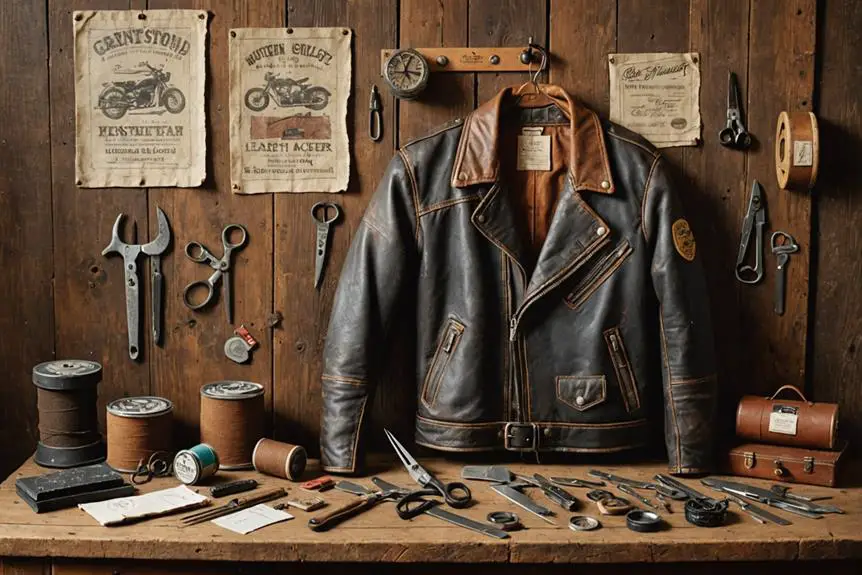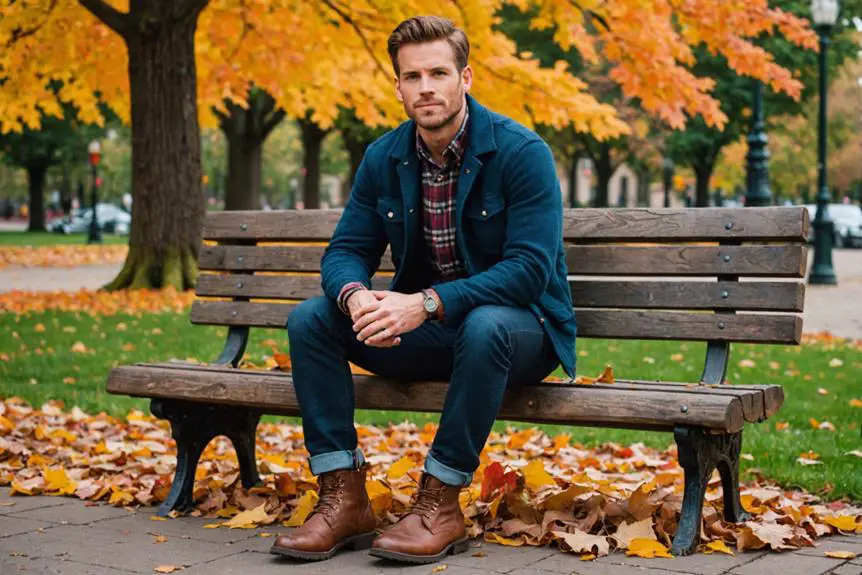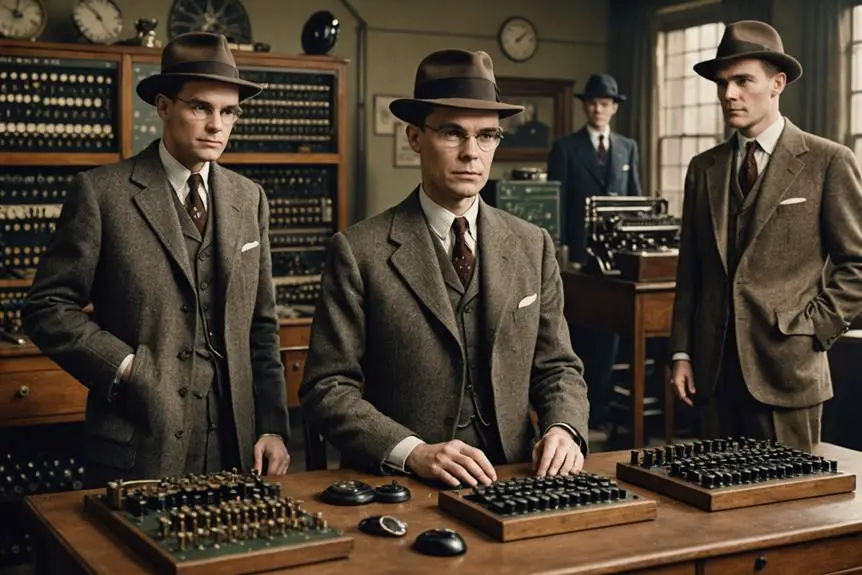Isn't it fascinating how some jacket brands have stood the test of time? You might be surprised to learn that names like Woolrich, Purdey, and Schöffel, dating back to the early 19th century, have not only survived but thrived in an ever-changing fashion landscape. Each brand carries a rich history and a story that intertwines with craftsmanship and innovation. What keeps these brands relevant today, and how have they adapted to modern trends while maintaining their heritage? Exploring these questions can reveal much about both the brands and our own choices in outerwear.
Historical Background of Jacket Brands
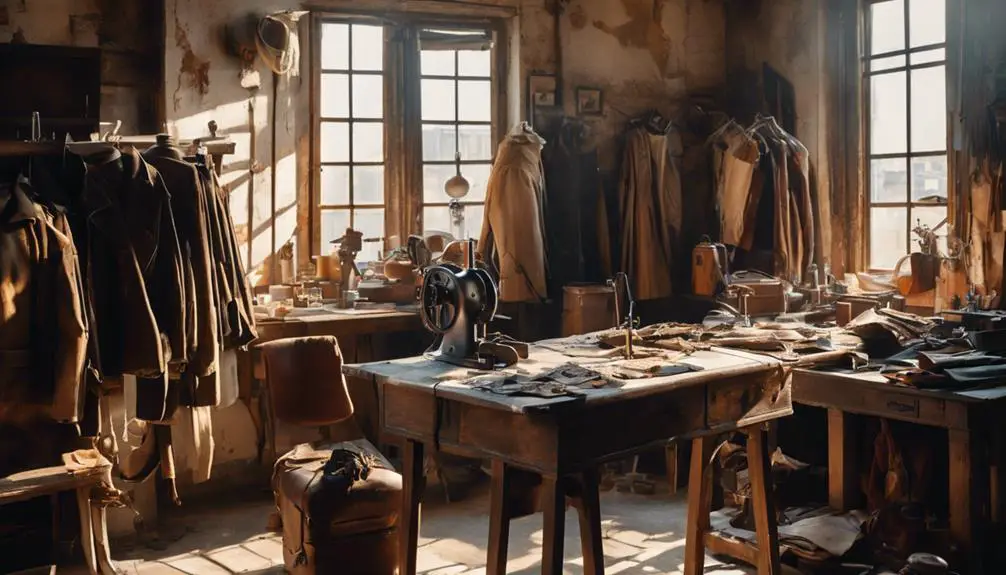
Throughout history, jacket brands have evolved to meet the needs of various outdoor enthusiasts and workers. One of the standout pioneers is Woolrich, founded in 1830, which holds the title of the oldest American outdoor clothing brand. Recognized for its durable jackets, like the iconic Arctic Parka, Woolrich has consistently delivered high-quality garments designed for extreme weather conditions.
Similarly, Carhartt, established in 1889, is known for its durable workwear, including jackets that have become staples in both functional and fashion contexts. The brand's emphasis on quality craftsmanship has allowed it to stand the test of time, making it a significant player in the vintage clothing market, which has seen a resurgence in interest due to identifying vintage items.
Carhartt initially focused on creating durable work jackets for railroad workers. Over the years, it expanded its offerings, blending functionality with style, appealing to both laborers and fashion-conscious consumers.
Meanwhile, L.L.Bean, founded in 1912, became famous for its rugged outdoor clothing, particularly the Maine Hunting Shoe. This brand emphasizes quality and customer satisfaction, offering a lifetime guarantee on its products, which has built a loyal customer base.
Don't forget about Purdey, founded in 1814 in the UK, known for high-quality shooting jackets tailored for sporting enthusiasts. Their blend of luxury and functionality set a high standard in outdoor apparel.
Lastly, the German brand Schöffel, established in 1804, has earned a reputation for combining traditional craftsmanship with modern technology, particularly in jackets designed for outdoor activities.
Each of these brands has contributed to the rich historical background of jacket manufacturing, ensuring that outdoor enthusiasts like you can find the perfect blend of style, comfort, and durability for any adventure.
Iconic Jacket Styles Through Time
Over the decades, iconic jacket styles have shaped fashion and culture, each telling a unique story about its origins and purpose.
Take the trench coat, for instance. Originating in the late 19th century, it was designed for British soldiers during World War I, combining functionality with style, and has since become a timeless fashion staple.
The bomber jacket, developed in the 1910s for military aviators, shares a similar narrative of evolution, reflecting the changing attitudes of society. With its distinctive cropped silhouette and knit cuffs, it evolved into a symbol of rebellion and youth culture, especially in the mid-20th century.
Vintage clothing, such as Nike jackets, showcases the evolution of design and branding over the decades, highlighting the quality and craftsmanship that resonates with collectors and enthusiasts vintage Nike clothing.
You can't forget the denim jacket, first introduced by Levi Strauss in the 1880s, which has become an enduring classic often associated with American workwear. It later found a home in various subcultures, including rock and punk, reflecting the spirit of those who wore it.
The leather jacket, gaining popularity in the 1920s among motorcyclists, represents a blend of rugged durability and rebellious spirit, famously worn by icons like Marlon Brando in "The Wild One."
Notable Innovations in Outerwear
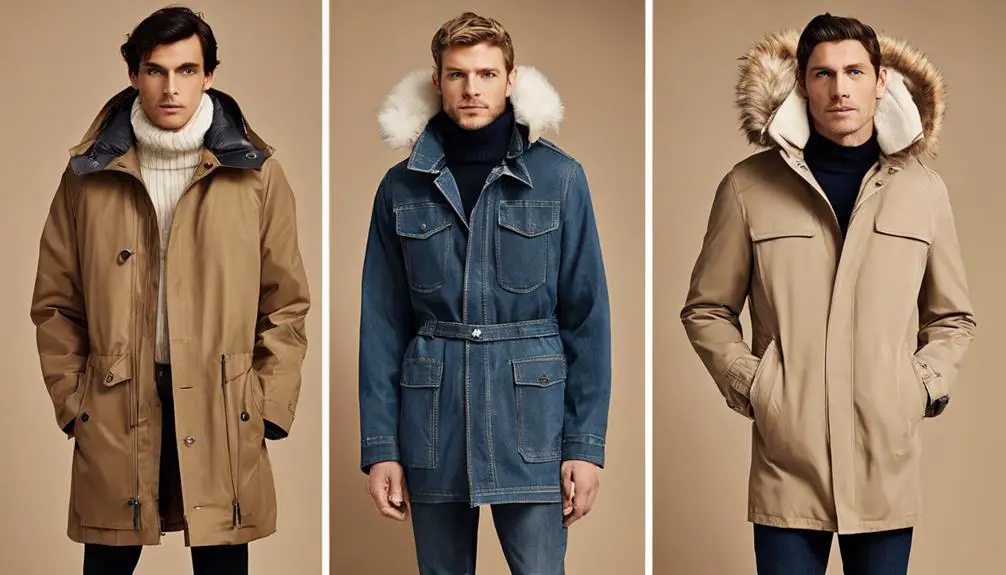
Notable Innovations in Outerwear
When you think about outerwear, it's fascinating to see how historical fabric innovations and weatherproofing techniques have transformed the jackets we wear today.
Brands like Helly Hansen and Mammut have pushed boundaries, creating designs that not only stand up to the elements but also enhance performance in extreme conditions.
The evolution of iconic brands like The North Face, which started in the late 1960s, showcases their commitment to high-quality outdoor gear and significant logo evolution.
As we explore these notable innovations, you'll discover how iconic jackets have evolved to meet the demands of modern adventurers, blending tradition with cutting-edge technology.
Historical Fabric Innovations
Since the early 19th century, the outerwear industry has seen remarkable fabric innovations that have transformed how we approach protection against the elements. Brands like Woolrich, established in 1830, pioneered the use of wool with their iconic Buffalo Check fabric, creating a legacy that resonates with outdoor enthusiasts today. This innovative approach laid the groundwork for high-quality materials in outerwear, setting the stage for future advancements.
In 1877, Helly Hansen revolutionized outdoor clothing by introducing waterproof oilskin jackets, providing essential protection against harsh weather. Similarly, Mammut, founded in 1862, focused on functional designs that cater to mountain sports enthusiasts, emphasizing the importance of durable fabrics in their offerings.
Carhartt, established in 1889, became a staple in the workwear sector, known for rugged jackets that combine durability and practicality. Their commitment to high-quality materials has set a standard that many outdoor clothing companies endeavor to meet.
With each historical fabric innovation, these brands have shaped our understanding of what outerwear can achieve, ensuring that whether you're braving the elements or working hard, there's a jacket ready to keep you comfortable and protected.
Weatherproofing Techniques Evolution
Throughout the history of outerwear, the evolution of weatherproofing techniques has played a crucial role in enhancing the functionality and comfort of jackets. It all began with Helly Hansen's innovative oilskin fabrics in the late 19th century, providing waterproof protection against the harshest elements.
Fast forward to the 20th century, and the introduction of synthetic materials like Gore-Tex changed the game. This breathable yet waterproof fabric allows moisture vapor to escape while keeping rain and wind at bay, perfect for your outdoor adventures.
Brands like Mammut have taken things further with advanced technologies such as DRYtech and Mammut 3XDRY fabrics, which not only enhance waterproofing but also improve moisture management in outdoor apparel.
The integration of insulation materials like PrimaLoft and Thinsulate has transformed jackets, boosting thermal efficiency while keeping them lightweight and compressible—ideal for any outdoor enthusiast.
Moreover, the rise of eco-conscious outerwear is reshaping the industry. Brands like Patagonia and Ferrino are leading the charge, employing recycled materials and sustainable production methods, proving that you can enjoy high-performance gear while honoring the planet.
With these innovations, jackets are more than just clothing; they're essential tools for exploration!
Iconic Jacket Designs
Over the decades, iconic jacket designs haven't only defined fashion trends but also revolutionized functionality in outerwear.
Take Schott's Perfecto Jacket, introduced in 1928; it's celebrated as the first leather motorcycle jacket and embodies the American rebellious spirit. Worn by rock stars and movie legends, it remains a cultural icon today.
Woolrich's Arctic Parka is another standout, crafted to withstand extreme cold for over 40 years. This jacket innovatively blends modern technology with sustainable materials, all while keeping its classic look.
Carhartt's rugged outerwear, especially their durable bibs and jackets, is perfect for laborers and has seamlessly evolved into casual fashion, emphasizing high-quality, practical clothing.
Meanwhile, Helly Hansen pioneered waterproof outerwear with their oilskin jackets, essential for sailors and outdoor enthusiasts since the late 19th century.
Finally, Mammut's commitment to mountain sports shines through in their technical jackets, utilizing high-performance materials designed for extreme conditions.
These iconic jacket designs not only offer protection but also represent a lifestyle, demonstrating how functional outerwear can be stylish and enduring.
Whether you're braving the cold or hitting the road, these jackets have got you covered!
Brand Heritage and Identity
When you explore the oldest jacket brands, you can't help but admire their rich heritage and the stories behind each piece.
These brands not only uphold high standards of craftsmanship and quality but also reflect cultural influences that shape their designs.
For instance, The North Face, founded in 1966, evolved from a local outdoor retailer to a cultural icon, showcasing the blend of outdoor functionality and urban style influencing fashion and lifestyle.
Historical Significance of Brands
The historical significance of jacket brands lies not only in their longevity but also in their ability to weave together heritage, craftsmanship, and identity. When you look at the oldest American outdoor clothing companies, like Woolrich, founded in 1830, you see a legacy built on quality products and durable gear. Woolrich's Arctic Parka isn't just a jacket; it's a symbol of innovation and resilience, reflecting its storied past.
Brands like Schöffel and Purdey, established in the early 19th century, showcase the rich traditions in craftsmanship that have defined the outdoor apparel industry. Helly Hansen, pioneering waterproof gear since 1877, exemplifies how brand heritage can blend with a forward-thinking approach to meet the demands of outdoor enthusiasts.
Devold, known for its sustainable merino wool, has built its identity around quality craftsmanship tailored for adventure. Orvis, with its unique blend of outdoor experiences and customer satisfaction, further highlights the importance of historical significance in creating a strong brand identity.
These brands not only sell products; they embody a legacy that resonates with consumers, connecting them to a rich history of adventure, quality, and innovation.
Craftsmanship and Quality Standards
Craftsmanship and quality standards are integral to the identity of the oldest jacket brands, shaping their reputation and consumer loyalty. These brands, rooted in a rich heritage, prioritize high-quality materials and expert techniques to create durable outdoor clothing that stands the test of time.
For instance, Woolrich, founded in 1830, is renowned for its Arctic Parkas, which embody meticulous craftsmanship and are designed to tackle extreme cold with functional compartments and distinctive silhouettes.
Schöffel, established in 1804, blends traditional craftsmanship with modern technology, ensuring their outdoor clothing meets contemporary performance standards. Meanwhile, Filson, since 1897, has been a beacon of durability, crafting outerwear that reflects a commitment to quality that has lasted over a century.
Aigle, specializing in handcrafted rubber boots since 1853, showcases artisanal craftsmanship, maintaining a strong international presence. Finally, Carhartt, founded in 1889, focuses on producing durable workwear that appeals to both blue-collar workers and fashion-conscious consumers, all while upholding high-quality standards.
Together, these brands illustrate the importance of craftsmanship and quality, making them enduring symbols of American heritage in the world of outdoor clothing.
Cultural Influence on Design
Cultural influences play an essential role in shaping the designs of the oldest jacket brands, reflecting their unique heritage and identity.
For instance, Woolrich, established in 1830, emphasizes durability in outdoor clothing, catering to adventurers who value functionality.
Similarly, Schott crafted the iconic Perfecto leather motorcycle jacket in 1913, embodying American biker culture and rebellion. This jacket not only serves a practical purpose but also stands as a symbol of freedom and individuality.
Carhartt, founded in 1889, draws on its workwear roots, producing rugged jackets that appeal to laborers and fashion enthusiasts alike, merging toughness with contemporary style.
Meanwhile, Helly Hansen, established in 1877, revolutionized waterproof jackets, addressing the needs of sailors and outdoor adventurers, ensuring they stay dry while battling the elements.
Lastly, Levi Strauss & Co., since 1853, has intertwined its identity with American culture through its denim jackets, representing casual style and youthful rebellion.
These brands showcase how cultural influences greatly shape their designs, creating a legacy that resonates with customers and stands the test of time.
Impact of Sustainability Trends
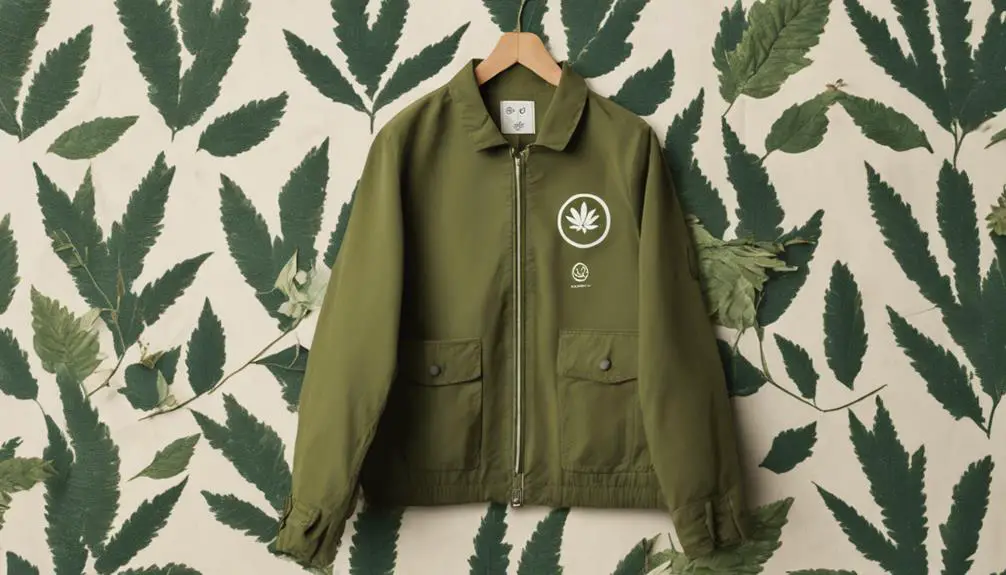
Sustainability trends are reshaping the landscape of the outdoor apparel industry, pushing brands to rethink their practices. You'll notice that brands like Helly Hansen and Ferrino are now emphasizing durable materials designed to last longer. This shift reduces the frequency of replacements, ultimately minimizing waste and promoting sustainability. It's not just about longevity; it's about creating high-quality products that consumers can trust.
Woolrich stands out for integrating eco-friendly production methods by utilizing natural fibers, aligning perfectly with today's growing demand for environmentally responsible clothing. Vintage and heritage brands, such as Levi Strauss & Co., are also stepping up. They're incorporating recycled materials and promoting ethical manufacturing processes, especially in their denim products. This commitment to sustainability is crucial in today's market.
You may also find that many brands are adopting closed-loop systems, aiming to recycle or upcycle materials. This innovative approach reduces textile waste and conserves resources, making jacket production more sustainable. Aigle, with its handcrafted rubber boots, showcases how quality craftsmanship can appeal to environmentally conscious consumers.
Future of Jacket Brands
As brands evolve to meet the demands of eco-conscious consumers, the future of jacket brands is becoming increasingly innovative and responsive to market needs. You'll notice that more companies are embracing sustainable practices, committing to eco-friendly materials and production methods that align with your values.
Innovations in fabric technology, such as lightweight and breathable materials, are enhancing the performance of jackets, making them suitable for both outdoor enthusiasts and urban dwellers.
One exciting trend is the integration of smart technology in jackets. Imagine wearing a jacket equipped with built-in heating elements or sensors that track your temperature and activity levels! These advancements not only improve functionality but also cater to your lifestyle.
In addition, customization is on the rise, allowing you to personalize fit and style options that reflect your unique preferences and body shape.
The growth of e-commerce and direct-to-consumer models is another game changer. These approaches empower brands to engage more closely with you, gathering valuable feedback that shapes future designs and marketing strategies.
This means you're not just a consumer; you're part of the creative process that drives innovation.
In essence, the future of jacket brands is bright and full of promise. With a focus on sustainability, smart technology, and personalization, the industry is poised to deliver products that not only meet your needs but also contribute positively to the planet.
Exciting times are ahead, and you'll want to be part of this evolution!
Frequently Asked Questions
What Is the Oldest Clothing Brand?
The oldest clothing brand showcases heritage fashion through timeless designs that embody classic silhouettes. You'll find iconic pieces that reflect retro trends and historical significance, offering sustainable clothing that resonates with vintage styles, bridging past and present.
Which Is the Oldest Luxury Brand?
When you consider the oldest luxury brand, think about its luxury heritage and historical significance. It showcases iconic craftsmanship, premium materials, and timeless elegance, reflecting a fashion legacy that emphasizes brand evolution and luxury longevity through the years.
What Brands Are Famous With Old People?
You might think older folks only choose trendy brands, but they often prefer classic styles. Brands like Brooks Brothers and Pendleton offer vintage appeal and timeless designs, emphasizing comfort over trend and fostering brand loyalty through traditional craftsmanship.
Who Made the First Clothing Brand?
You'll find that Brooks Brothers set the stage for the history of branding in fashion. Their early designs and marketing in fashion influenced future iconic clothing milestones, shaping the evolution of vintage clothing origins and textile innovation history.
